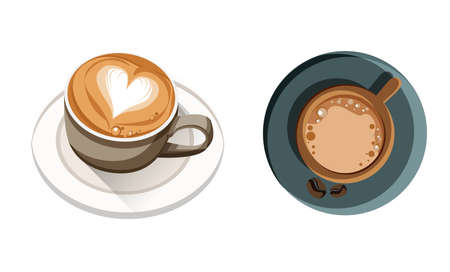1. Creating a Stress-Free Environment for Pets
When designing a pet-friendly café, one of the most important goals is to create a space where animals feel calm and safe. Just like humans, pets can experience stress when theyre in unfamiliar or overstimulating environments. By applying principles from environmental and behavioral psychology, café owners can design spaces that help animals relax and enjoy their visit.
Layout: Open but Zoned
An open layout gives pets room to move around without feeling confined. However, its also important to create designated zones—areas for eating, playing, and resting. This helps reduce anxiety by giving pets clear boundaries and predictable routines.
| Zone Type | Purpose | Design Tips |
|---|---|---|
| Dining Area | For owners and pets to enjoy food together | Use pet-safe furniture, keep pet bowls separate from human tables |
| Play Zone | Encourages movement and socialization | Soft flooring, toys, adequate space between groups |
| Resting Spot | Quiet space for pets to unwind | Add cozy beds, dimmer lighting, low foot traffic |
Lighting: Soft and Natural
Pets are sensitive to harsh lighting. Natural daylight is ideal, as it supports their circadian rhythms and reduces eye strain. If natural light isnt available, opt for warm-toned LED lights that mimic daylight without being too bright or flickery.
Lighting Tips:
- Avoid fluorescent bulbs—they can flicker at frequencies noticeable to animals.
- Add adjustable window shades to control sunlight throughout the day.
- Create shaded corners for pets who prefer lower light.
Noise Control: Calm Over Clamor
Loud noises can easily stress out pets. Soundproofing materials like acoustic panels, rugs, and soft furnishings help absorb noise. Playing soft background music or nature sounds can also mask disruptive street or kitchen noises.
Simple Noise-Reducing Ideas:
- Install padded seating and area rugs to reduce echo.
- Use plants as natural sound barriers between zones.
- Avoid placing speakers or loud appliances near pet areas.
By thoughtfully considering layout, lighting, and noise levels, pet-friendly cafés can become true havens for both animals and their owners—spaces where everyone feels right at home.
2. The Role of Scent and Sensory Design
When designing a pet-friendly café, its not just about having a water bowl and a few treats. Pets experience the world differently than humans—especially through their senses. That’s why scent control, natural materials, and tactile surfaces play such an important role in making your furry guests feel safe and at home.
Scent Control: Creating a Calm Environment
Dogs and cats have an incredibly strong sense of smell. What might seem like a faint aroma to us can be overwhelming to them. Avoid using strong cleaning chemicals or overpowering air fresheners. Instead, opt for neutral or pet-safe scents like lavender or chamomile, which can help reduce anxiety in animals.
Recommended Scents for Pet-Friendly Spaces
| Scent | Effect on Pets |
|---|---|
| Lavender | Calming and soothing for dogs |
| Chamomile | Helps reduce stress and anxiety |
| Cedarwood (light) | Natural insect repellent, comforting scent |
Natural Materials: Familiarity Through Texture
Pets are more likely to feel comfortable in spaces that mimic natural environments. Using wood, bamboo, cork, and stone in the design of floors, seating areas, or even pet zones helps create a grounded atmosphere. These materials also tend to retain warmth, which pets love to curl up on.
Tactile Surfaces: Making It Feel Like Home
Pets rely heavily on touch—not just with their paws but also with their bodies as they explore a space. Soft rugs, textured mats, cozy cushions, and gentle flooring like rubber or cork can offer comfort while preventing slipping or discomfort. Having dedicated pet seating or rest areas with these features can help pets settle in quickly.
Examples of Tactile Surface Options for Pet Zones:
| Surface Type | Benefits for Pets |
|---|---|
| Cork Flooring | Soft underfoot, reduces joint stress |
| Textured Rugs | Adds grip and warmth for resting spots |
| Padded Mats | Cushioned comfort for lounging pets |
By thoughtfully combining scent control with natural materials and tactile surfaces, pet-friendly cafés can go beyond just being welcoming—they can become a second home for our four-legged companions.

3. Furnishings and Spatial Layout for Animal Comfort
When it comes to designing a pet-friendly café, the furniture and layout play a huge role in making both pets and their humans feel at ease. Animals have different needs depending on their size, energy level, and personality. So, creating a space that’s flexible and welcoming is key.
Creating Zones for Different Pet Personalities
Just like people, pets enjoy spaces that match their mood or energy level. Some dogs are social butterflies who love open areas to move around, while others—like older cats or shy pups—prefer quieter corners where they can feel safe.
| Pet Type | Preferred Space | Design Features |
|---|---|---|
| Energetic Dogs | Open Play Area | Non-slip flooring, sturdy furniture, wide walkways |
| Senior Pets | Quiet Corners | Padded seating, soft rugs, away from loud noises |
| Small Breeds & Cats | Cozy Nooks | Enclosed spaces, elevated shelves, window perches |
Choosing the Right Furniture for Furry Guests
The best furnishings in a pet-friendly café are those that balance comfort with durability. Materials should be easy to clean and resistant to scratching or chewing. Think about washable cushion covers, wipeable surfaces, and low-slung chairs that pets can easily hop onto (with permission, of course!). It’s also important to include designated pet seating or resting spots—like plush mats or mini sofas—so animals don’t have to compete for space.
Materials That Work Well:
- Faux leather (easy to wipe down)
- Tightly woven fabrics (less likely to trap fur)
- Natural wood finishes (durable and stylish)
- Rubber-backed rugs (stay in place and reduce slipping)
A Layout That Flows for All Visitors
A good spatial layout prevents crowding and keeps things calm. Walkways should be wide enough for leashed dogs and their owners to pass comfortably. Seating arrangements can include both communal tables and individual booths so guests can choose what works best for them. Clear pathways between entrance, ordering counter, and outdoor areas help maintain flow—and prevent accidental paw traffic jams!
Pro Tip:
If your café has outdoor space, consider dog-friendly patios with shaded areas and water stations. These simple touches go a long way in making pets feel welcome.
4. Human-Pet Social Dynamics and Shared Spaces
Designing a pet-friendly café isn’t just about offering treats and water bowls—it’s also about creating a space where both pets and people can feel comfortable, safe, and welcome. Understanding the social dynamics between humans and their furry friends is key to making a café truly pet-friendly.
Encouraging Positive Interactions
Cafés should create areas that promote gentle interactions between pets and patrons without overwhelming either group. For example, layout choices can help manage energy levels—placing more active zones (like play corners or outdoor seating) farther from quiet corners helps balance the atmosphere.
Suggested Zoning for Shared Comfort
| Zone | Description | Purpose |
|---|---|---|
| Outdoor Patio | Open-air space with leash hooks and dog-safe furniture | Allows pets to move freely while remaining secure |
| Quiet Nooks | Low-traffic seating areas with cozy lighting | Ideal for guests with shy pets or who prefer calm environments |
| Pet Play Area | Designated area with toys and soft flooring | Encourages safe playtime and socialization among pets |
| No-Pet Zone | Indoor section reserved for non-pet guests or those with allergies | Maintains inclusivity and ensures health standards for all visitors |
Maintaining Boundaries and Cleanliness
A well-designed pet café keeps things tidy without ruining the fun. Using easy-to-clean materials like tile or sealed concrete makes cleanup quick after any accidents. Installing hand sanitizing stations, waste disposal bins, and clear signage helps keep everyone on the same page.
Tips for Clean and Safe Café Design
- Flooring: Choose slip-resistant, washable surfaces to prevent injuries and simplify cleaning.
- Furniture: Go for durable, scratch-resistant materials that can handle pet wear-and-tear.
- Signage: Post clear rules for pet behavior (e.g., leash policy, barking limits) in visible spots.
- Scent Control: Use air purifiers or natural deodorizers to maintain a pleasant environment for all guests.
- Zoning: Visually mark different areas using rugs, planters, or partitions to guide movement naturally.
The Role of Staff in Social Flow
Your staff can make or break the vibe. Training them to recognize animal body language, mediate conflicts gently, and offer assistance goes a long way. A friendly team who knows how to interact with both pets and owners helps foster a relaxed, welcoming atmosphere.
A Balanced Experience for All Visitors
The best pet cafés are designed with empathy—for both people and animals. When spaces are thoughtfully laid out, boundaries are respected, and cleanliness is maintained, it becomes easier to create an environment where tails wag and coffee flows smoothly.
5. Branding and Visual Cues That Speak to Pet Owners
When pet parents walk into a café, the first thing they notice isn’t just the smell of coffee—it’s how the space makes them feel. For pet-friendly cafés in the U.S., using visual design elements to create a welcoming environment for both humans and their furry companions is key. From signage to wall art, every detail tells a story—and that story should say, “Pets are not only allowed here, they’re loved.”
Pet-Inspired Decor That Feels Familiar
American pet owners often see their pets as family members. So when cafés include dog bone-shaped hooks, paw print patterns on cushions, or cat-themed artwork, it taps into this emotional bond. These small touches can trigger feelings of comfort and belonging—making the café more than just a place to grab coffee, but a space where customers feel seen and understood.
Signage That Speaks Their Language
The language used on signs matters. Instead of the usual “No Pets Allowed” signs found elsewhere, pet-friendly cafés use phrases like:
| Traditional Sign | Pet-Friendly Version |
|---|---|
| No Dogs Allowed | Leash Up & Come On In! |
| Please Keep Pets Off Furniture | Paws Off the Couch (Unless Invited!) |
| Service Animals Only | We Welcome All Well-Behaved Pets & Service Animals |
This kind of messaging shows personality, warmth, and inclusivity—all values that resonate strongly with American pet lovers.
Color Palettes That Calm and Connect
The psychology of color plays an important role too. Soft greens, warm browns, and neutral tones can help pets feel relaxed and safe. These colors mimic nature and give off a grounded vibe—perfect for spaces where dogs might be laying under tables or cats might be peeking from carriers.
Popular Color Choices in Pet-Friendly Cafés:
- Sage Green: Evokes calmness and nature.
- Warm Beige: Neutral and cozy; pairs well with wood accents.
- Pale Blue: Promotes serenity for anxious pets.
- Terracotta: Earthy and inviting; adds warmth to the space.
Cultural Relevance Through Local Touches
Incorporating local pet culture—like murals featuring neighborhood pups or offering branded bandanas with the cafés logo—helps build community. American cities often have strong pet communities, so when a café reflects this visually, it becomes a hub for like-minded people. Think chalkboards showing “Dog of the Week” or photo walls filled with regulars’ pets—it’s personal and heartwarming.
Tips for Making Visual Branding Pet-Friendly:
- Create a logo that includes animal motifs (like paws or tails).
- Use playful fonts that suggest friendliness without being childish.
- Add pet-friendly icons on menus to show dog-safe treats or pup cups.
- Design merch like mugs or tote bags featuring local pets or catchy pet phrases.
The magic behind these visual cues lies in their ability to speak directly to pet parents—not just logically, but emotionally. When branding aligns with love for animals, it builds loyalty that goes far beyond good coffee.


